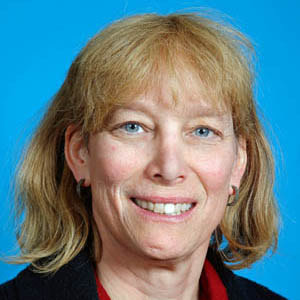 Tonya White Tonya White By Nabin Koirala In advance of our scheduled launch of the upcoming Journal “Aperture” from the Organization of Human Brain Mapping (OHBM), we wanted to get up close with the first Editor-in-Chief of the Journal - Tonya White. Tonya is currently an Associate professor in the Department of Radiology and Nuclear Medicine and Department of Child and Adolescent Psychiatry in the Erasmus Medical center in Rotterdam, Netherlands. We discussed her personal journey in Science and her vision for the Journal. Nabin Koirala (NK): Thank you so much for making time for this interview. To start, could you please introduce yourself to general readers who may not be scientists? Tonya White (TW): That's always an interesting question because I have a number of different hats. I could say that I'm a developmental neuroscientist, a child and adolescent psychiatrist, a pediatrician or an electrical engineer. But what I've been mostly doing currently is what's called pediatric population neuroscience, which is actually the intersection between epidemiology and developmental neuroscience. The neuroimaging program I came to set up in Rotterdam is a large population-based study of child development. We’re currently collecting and evaluating more than 8000 MRI scans from children at three time points. Through the so called “Generation R Study” nearly 10,000 mothers who were pregnant between 2002 and 2006 were approached to participate in the study and the imaging is nested into a multifaceted epidemiologic study looking at many different aspects of child development.
0 Comments
 John Mazziotta is Professor of neurology, CEO of UCLA Health, and vice chancellor of UCLA health sciences. He was also a founding member of the OHBM. He co-authored the first book on whole-body, cross-sectional anatomy using CT. He’s been involved in the first PET studies in normal subjects and with patients with epilepsy and Huntington’s disease. He was the principal investigator of the ICBM brain atlas, a key tool for brain normalisation. We interviewed him as part of our OHBM Oral History series, to find out about the early days of PET, (f)MRI and the inception of OHBM. Nils Muhlert (NM): Thank you very much, Professor Mazziotta, for joining us today. I'd like to start by asking you about your background: Why and how did you become interested in neuroimaging? John Mazziotta (JM): Well, I wanted to be an architect. That didn't work out because I spent a lot of time in Manhattan with architects when I was an undergraduate, and they didn't seem very happy. I like science and went into a lab where I was doing early molecular biology and that was interesting but very isolating. I thought, “Well, I'll go to medical school.” I hated medical school, memorizing bones and things of this sort. Ultimately, I met a neuroscientist in the medical school. The school also had a very active biophysics department and were building the first CT scanner that could image outside of the head. This is now mid-1970s. I got involved in that project and we physically built that machine, soldering wires. We had a functional scanner that worked anywhere in the body. I decided I would become a neurologist, moved to Los Angeles and UCLA and immediately met the group that had moved from Washington University in St. Louis. They had been involved in the development of PET and all worlds connected, so I got involved in research with PET and then MRI. Authors: Katie Williams, Ilona Lipp, Mark Mikkelsen Infographic: Roselyne Chauvin Expert editors: James Kolasinski, Paul Mullins Newbie editors: Curtiss Chapman, Yana Dimech Introduction
The noninvasive imaging tools that we Human Brain Mappers apply are most often being used to research brain structure and function. Neurotransmitter systems are something that we are aware of and use to take into account when coming up with hypotheses or interpreting our findings, but rarely make the direct subject of our investigation. Most of us have probably heard of GABA (gamma-aminobutyric acid) as the principal inhibitory neurotransmitter that is used by many interneurons. That we can also measure GABA in vivo with MR spectroscopy (MRS) is maybe less widely known. While this biomedical imaging tool opens many doors for neuroscience, measurement of GABA using MRS is not broadly used yet, possibly because special sequences and analysis methods are needed. At the OHBM Annual Meeting in 2019, for the first time, an educational session on GABA MRS was held. This post summarizes what was taught about the most important things you need to know if you’re considering GABA MRS for your research. |
BLOG HOME
Archives
January 2024
|
 RSS Feed
RSS Feed